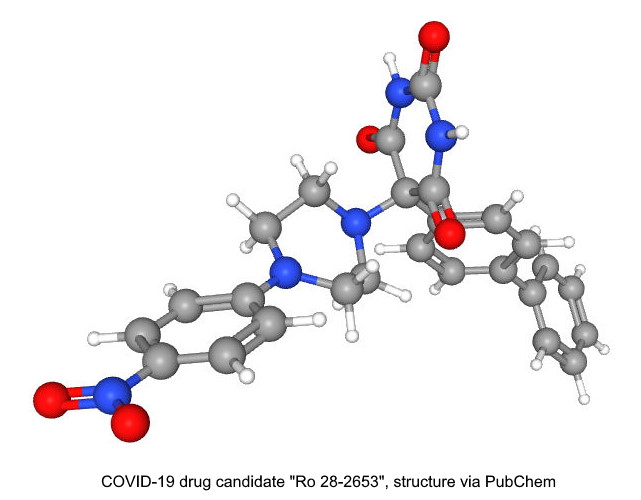While vaccination and public education concerning the transmission of the coronavirus causing COVID-19 have been at the forefront of our response to the pandemic, there remains an urgent need for pharmaceutical interventions in cases where infection occurs and leads to severe morbidity with a significant risk of death. New work in the International Journal of Computational Biology and Drug Design has focused on three protein targets in the body that are thought to be critical to the propagation of the virus in the body following infection and lead to symptoms.

According to Srija Mukherjee and Santanu Paul of the Laboratory of Cell and Molecular Biology at the University of Calcutta, India, angiotensin-converting enzyme-2 receptor (ACE-2) represents a promising target for small molecule pharmaceuticals. SARS-CoV2 enters human cells via the ACE-2 receptor located in the membrane of lungs, arteries, kidneys, and intestine. As such, a small molecule that selectively targets this protein could be used to reduce the interaction of the virus with those proteins and so impede its cycle of infection to replication.
The team has turned to a computer program that has a model of the protein target. Molecular structures for the drug candidates are then matched to the docking site in the protein model to determine how well they might fit the site and how well they bind to it. This kind of in silico screening of drug molecules allows the team to quickly determine which of ten candidates might be worth pursuing in experiments that would be carried out in the laboratory in vitro and then any that prove useful in those tests would be moved to an animal model for in vivo assessment.
The primary benefit of in silico tests being that any candidates that look very unlikely to dock well with the target protein can be discarded and time and resources not wasted on in vitro and in vivo experiments that would most likely reach a dead-end.
As such, the team has tested ten drug candidates against the target protein models in silico. These drugs are Hydralazine, Fostemsavir, Trandolapril, Triamterene, Isuprel, Albuterol, Benadryl, Ro 28-2653, Theophylline, and Osimertinib mesylate. They determined that a molecule known as Ro 28-2653 has the greatest promise in the treatment of COVID-19. This compound, which has the chemical name 5-biphenyl-4-yl-5-[4-(-nitro-phenyl)-piperazin-1-yl]-pyrimidine-2,4,6-trione, is already known as a drug molecule and has been tested as an inhibitor of a type of protein involved in the growth of blood vessels in cancerous tumours.
“Our study shows that Ro 28-2653 can be a potent inhibitor against COVID-19,” the team writes. They point out that the drug is poorly soluble in water and so would need a carrier, such as the ring-shaped “starch” molecule cyclodextrin, to allow it to be taken by mouth. However, the drug has an important advantage in that it has a long half-life in the body once absorbed and so would hopefully remain active against the virus for a significant length of time. Indeed, because it targets a protein in the body, it should be active against any current or novel strain of the coronavirus.
The next step will be to take the in silico experiments to the in vitro level to see whether the drug works in the laboratory against the target protein.
Mukherjee, S. and Paul, S. (2021) ‘In silico study identifies RO 28-2653 as a novel drug against SARS-CoV2 mutant strains’, Int. J. Computational Biology and Drug Design, Vol. 14, No. 6, pp.457–480.

No comments:
Post a Comment